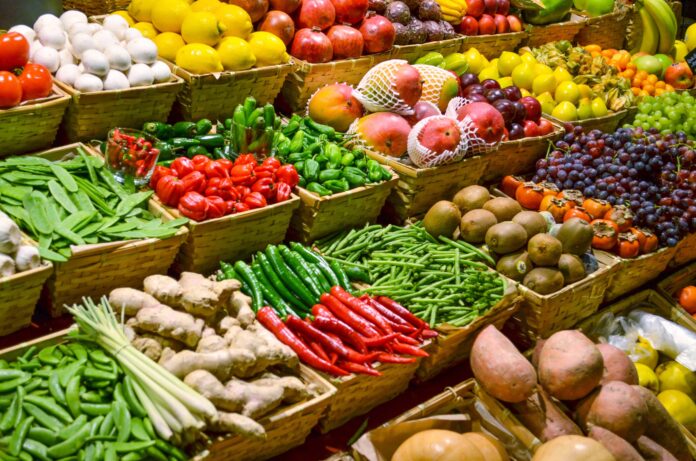Groceries have become such a costly expense that for many households, they are the second largest monthly expense after housing costs! Everyone knows that food is essential for survival. However, not all food is the same. Some foods are more nutritious than others. Oftentimes, the cheapest food at the grocery store isn’t the healthiest. Eating a diet that lacks nutritional value can have a negative impact on your overall health. But considering the prices of healthy foods like meat, dairy, eggs, and more, it’s difficult for someone already struggling financially to justify spending extra at the grocery store. Fortunately, if you find yourself in a position where you’re struggling to afford the cost of food, there are plenty of options that you can turn to for help!
Explaining Different Food Assistance Programs That Can Help
Eating a balanced and nutritious diet is one of the best things a person can do for their health and well being. However, not everyone can afford to keep their home stocked with healthy foods. Many people can even find themselves in a situation where they don’t have enough food. The government offers a variety of nutrition assistance programs that can help. Not every program is the same. Each program has its own unique purpose and therefore helps different people in different ways. The assistance programs that we are covering in this article include:
- The Emergency Food Assistance Program (TEFAP)
- Special Supplemental Nutrition Program for Women, Infants, and Children (WIC)
- Farmers Market Nutrition Program (FMNP)
- Supplemental Nutrition Assistance Program (SNAP)
- Senior Farmers’ Market Nutrition Program (SFMNP)
- National School Lunch Program (NSLP)
- Summer Food Service Program (SFSP)
- Special Milk Program (SMP)
- School Breakfast Program (SBP)
- Child and Adult Care Food Program (CACFP)
- Fresh Fruit and Vegetable Program (FFVP)
- Commodity Supplemental Food Program (CSFP)
The Emergency Food Assistance Program (TEFAP)
This assistance program provides emergency meals to low-income individuals and families in need. However, TEFAP doesn’t directly deliver the aid that it provides. Instead, local organizations like soup kitchens and food pantries distribute the meals directly to the community. These meals are provided at no cost to the person receiving them! For details about this program and how you can benefit, visit the Food and Nutrition Service (FNS) website.
Before local organizations receive the food that they serve to their communities, it passes through a few different channels first. The United States Department of Agriculture (USDA) purchases nutritious and quality USDA foods in bulk. The food is then divided up and distributed to state agencies such as food banks. The USDA decides how much food to distribute to each state by taking into consideration both the poverty level and unemployment rates in the state. Food banks are then in charge of distributing the food to soup kitchens, etc.
Special Supplemental Nutrition Program for Women, Infants, and Children (WIC)
WIC is a federal nutrition assistance program also provided by the FNS office within the USDA. Qualifying recipients can benefit from nutrition vouchers that can be used at 47,000 retailers, as well as nutrition education and counseling at WIC clinics. This program has roughly 10,000 clinic sites for recipients to visit! Some locations include schools, county health departments, and hospitals. In addition to those benefits, WIC can also help with health screenings, welfare services, and social services.
You may have guessed it from the name of the program, but not everyone can benefit from WIC. In fact, only women who are pregnant or postpartum, infants up to one year old, and children five years old or younger can benefit. There are 89 WIC agencies across the U.S. In order to benefit from this program, you can reach out to your local agency. You can go online or call to get started. From there, you can set up an appointment.
Farmers Market Nutrition Program (FMNP)
FMNP offers nutrition assistance in the form of coupons that can be used at certain vendors. Vendors are usually farmers, roadside stands, and farmers markets. Only vendors that have been approved by the state can accept FMNP coupons. This nutrition assistance program runs off of grants that the FNS gives to states. State agencies are in charge of managing this program. Therefore, you can reach out to your FMNP state agency for more details about how this program works. Contact information is listed online! FMNP and WIC are associated. Those who can benefit from this program are WIC recipients. However, infants under four months old cannot receive this additional assistance.
Supplemental Nutrition Assistance Program (SNAP)
SNAP uses Electronic Benefit Transfer (EBT) cards to deliver monthly grocery assistance to its recipients. EBT cards allow SNAP recipients to access and spend their benefits quickly and efficiently. In order to qualify for assistance with SNAP, your household needs to satisfy certain requirements. It’s important to know that the exact requirements aren’t the same in every state. Furthermore, the application also depends on where you live. To get started, a good first step is to contact your state agency. You can go online, speak to someone over the phone, or visit the office in person.
Since this is a nutrition assistance program, there are limitations to what can be purchased using SNAP benefits. Only qualifying food items can be purchased using an EBT card. In addition to that, EBT cards aren’t accepted at every store. Approved retailers typically advertise that they accept this form of payment. Keep that in mind when considering this popular option!
Senior Farmers’ Market Nutrition Program (SFMNP)
Low-income seniors who are 60 years of age or older can benefit from this assistance program. This program determines low-income as someone whose income is not greater than 185% of the federal poverty income level. Seniors can benefit by getting fresh produce from local sources, such as vegetables, fruit, herbs, and even honey. Not only does this type of assistance help seniors, but the local suppliers also benefit from the increased business. In fact, that is one of the main goals of SFMNP. They aim to increase both current business and further development of farmers’ markets, roadside stands, and community-based agriculture programs!
National School Lunch Program (NSLP)
Children of low-income families can receive a nutritious lunch completely free or at a lesser cost. The FNS also provides this nutrition assistance program! Families that have an income that is below 130% of the federal poverty guidelines can qualify for free lunch. Meanwhile, families that have a slightly higher income between 130% and 185% of the poverty guidelines can qualify for a reduced-cost lunch. Furthermore, families that are already recipients of either SNAP or Temporary Assistance for Needy Families (TANF) may automatically qualify for free meals.
Children that attend both public and private schools can benefit from this assistance option. State agencies partner with school administrators in order to operate this program. More information about this program can be found online or by contacting your state agency. As previously stated, the meal that is served should be nutritious. Schools are required to serve qualifying children lunch that offers the necessary daily nutrients. The schools are responsible for deciding what to serve, and afterward they are reimbursed by the program. These lunches should fulfill one-third of the following daily values:
- Protein
- Calcium
- Iron
- Total calorie intake
- Vitamin E
- Vitamin A
Summer Food Service Program (SFSP)
This nutrition assistance option is another one that provides free meals to children. However, the difference is that the meals aren’t only provided in schools. Multiple places provide free meals, while school is not in session, to qualifying children and teens thanks to this program. The places that participate in this program are reimbursed for the meals that they offer. Similar to many of the other assistance options that we’ve covered, this program is operated by states using federal funding. Those under 18 years old can benefit from this program. You may also find that SFSP is often referred to as the Summer Meals Program.
Sites, sponsors, and state agencies work together in order to operate this program.
Sites
This can include many places within a community. Examples could be schools, parks, churches, clinics, community centers, migrant centers, and more. These are typically supervised and safe places where children can directly benefit from a free meal.
Sponsors
The sites work directly with sponsors in order to provide the meals. Sponsors are the ones that receive reimbursements for running and managing the program. Sponsors may manage more than one site if possible. Examples include non-profit community organizations, schools, camps, or local government agencies.
State Agencies
Sponsors enter into agreements with state agencies in order to participate in the program and manage different sites. State agencies communicate with the USDA as well as manage the program.
Special Milk Program (SMP)
Childcare facilities, schools, and certain camps can offer free milk to qualifying children with this program. The milk that is offered has to meet state, local, and FDA quality standards in order for the facility to receive the reimbursements. Specifically, the milk must be pasteurized and fat-free or low-fat. In addition to that, the milk must contain the proper amount of Vitamin A and D. SMP is important because milk contains important nutrients that can aid in child development. Children already receiving nutritional benefits from another federal program will not qualify for SMP.
School Breakfast Program (SBP)
This nutrition assistance program provides qualifying children with breakfast at no cost or at a reduced cost. Children can qualify for benefits with SBP in a few different ways. First, a child may qualify if their family meets the requirements for both household size and income level. Second, a child may qualify if they are experiencing homelessness, are a foster child, a migrant, or a runaway. Lastly, children whose families are already benefiting from SNAP, Head Start, or other federal programs may automatically qualify for SBP.
State agencies administer this program using federal funding from the FNS. State agencies and school administrators partner up in order to operate SBP. Facilities that can operate this program include residential childcare, charter schools, public schools, and non-profit private schools. These facilities that run the program receive reimbursements in the form of cash subsidies for the breakfast that they provide. Go online to find out more about this program and if it’s operating near you!
Child and Adult Care Food Program (CACFP)
This federal nutrition assistance program benefits over 3 million children and 100,000 adults every day! CACFP works by providing reimbursements to participating facilities for the healthy food that they provide. Places that can receive reimbursements include day care homes, childcare centers, some after-school programs, emergency shelters, and adult day care centers.
Fresh Fruit and Vegetable Program (FFVP)
The goal of this program is to promote a healthy environment in schools and provide children with education about nutrition. Ultimately, FFVP wants to help children accept and eat more fresh fruit and vegetables. To accomplish this goal, they offer qualifying children a chance to eat a variety of fruits and vegetables, while they’re in school. This federal program is operated inside of elementary schools. State agencies are tasked with the management of the program. Therefore, if you want to learn more about FFVP, you can reach out to your state agency or go online.
Commodity Supplemental Food Program (CSFP)
CSFP operates by distributing both food and funding to states, as well as to Indian Tribal Organizations (ITOs) that take part in the program. Recipients don’t directly benefit from CSFP. Instead, state agencies are in charge of delivering nutritious USDA foods to local organizations. These local groups can include both public and non-profit private organizations. They are responsible for deciding who can receive this assistance, as well as delivering the food and more.
The purpose of the program is to supplement the diets of qualifying low-income seniors who are 60 years of age or older. Other qualifications, other than income and age, may be required in certain states. The nutrition assistance that these seniors receive is not enough to cover their entire diet. The food bundles that they receive typically contain nutritious foods that may make up for nutrients that they aren’t normally getting enough of.
Wrapping It Up
Eating a balanced and nutritious diet can positively affect your overall health and wellbeing. Likewise, eating a variety of nutritious foods can aid in your child’s development and quality of life. It is understandable if you’re struggling with the cost of groceries these days. Millions of families are feeling the effects of inflation when it comes to their grocery bill. There are various federal programs that can offer relief. Some programs can provide your child with a meal while at school. Meanwhile, other programs can offer monthly assistance that you can spend on grocery items. Whatever help you need, there is likely a program for you!










